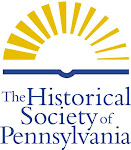While there are many documents in this collection that illustrate the practice of slavery in Maryland, Delaware and Pennsylvania, I chose a few that were unfolded this week. These papers range from runaway slave notices to indentures for former slaves. What has been surprising to me is the element of agency on the part of some of the slaves to choose (or at least influence) where they worked.
I grew up with the vision of "Roots" as the way slavery was, and these papers are showing that there was much more of a relationship between people than one might expect.

This is not to minimize the brutality implicit in the ownership of human beings. Whether someone was beaten and chained or lived with a family for years, only to be tallied with the horses and furniture in someone's estate, they were
owned. This ownership has taken its toll on generations of people, and has greatly impacted our society today. What is interesting about the relationships between slaves and their owners, as documented in these papers, is that it was so complex. It was paternalistic, as we can see in the above document, but there was, in many cases, an element of respect for the slave's experience that surprised me.





 This is one of the larger drawings about 6 by 7 inches.
This is one of the larger drawings about 6 by 7 inches.

 A chess game 1864 sytle!
A chess game 1864 sytle!


 This beautiful little document was in a group of papers from the mid 1700's in what seems to be a land dispute in Pennsylvania. It was written by the mayor of London and contains two proofs of marriage as one can see by the vellum tabs in the middle of the second image above, complete with blue paper on the back of the embossed stamp.
This beautiful little document was in a group of papers from the mid 1700's in what seems to be a land dispute in Pennsylvania. It was written by the mayor of London and contains two proofs of marriage as one can see by the vellum tabs in the middle of the second image above, complete with blue paper on the back of the embossed stamp. 





